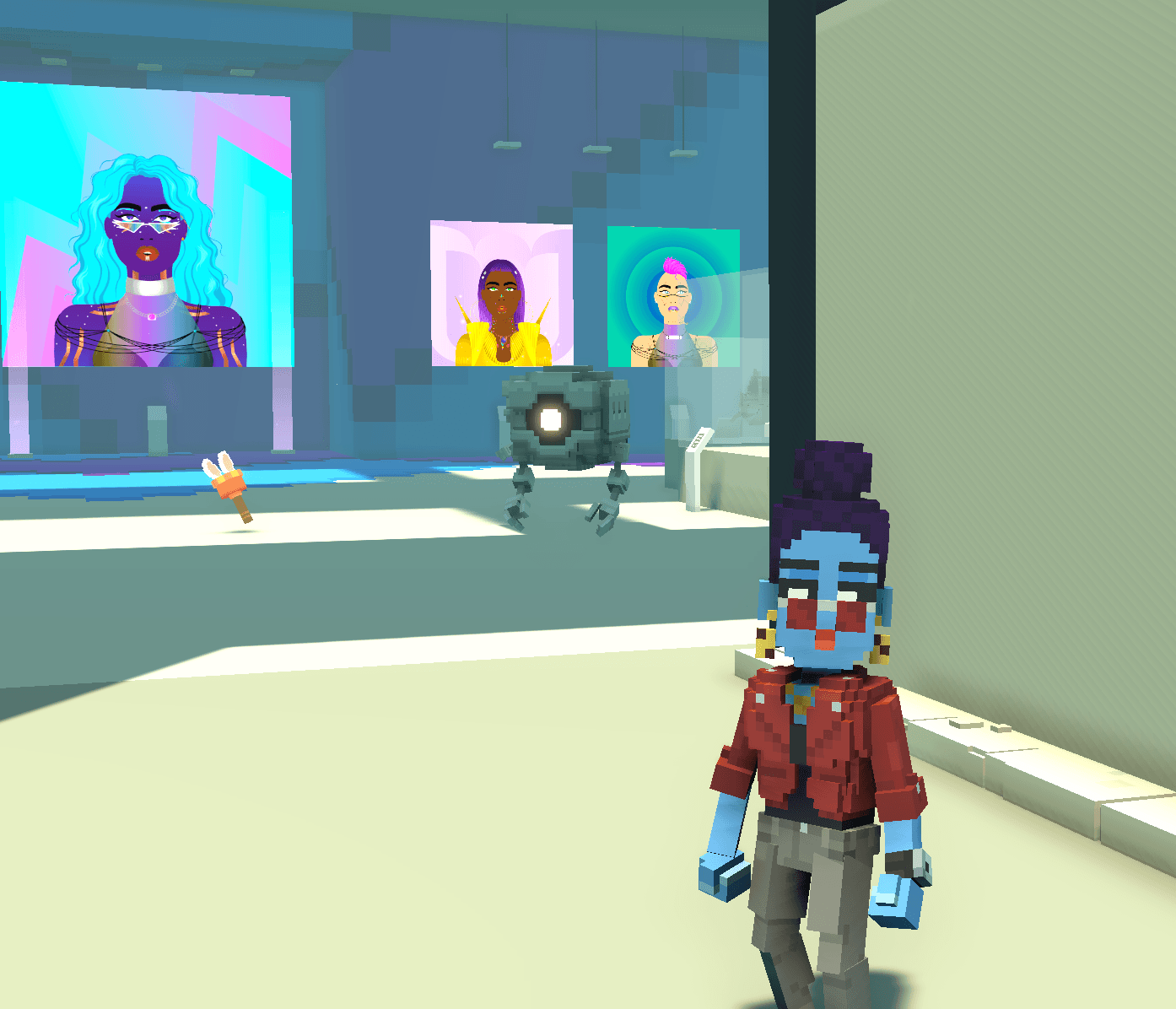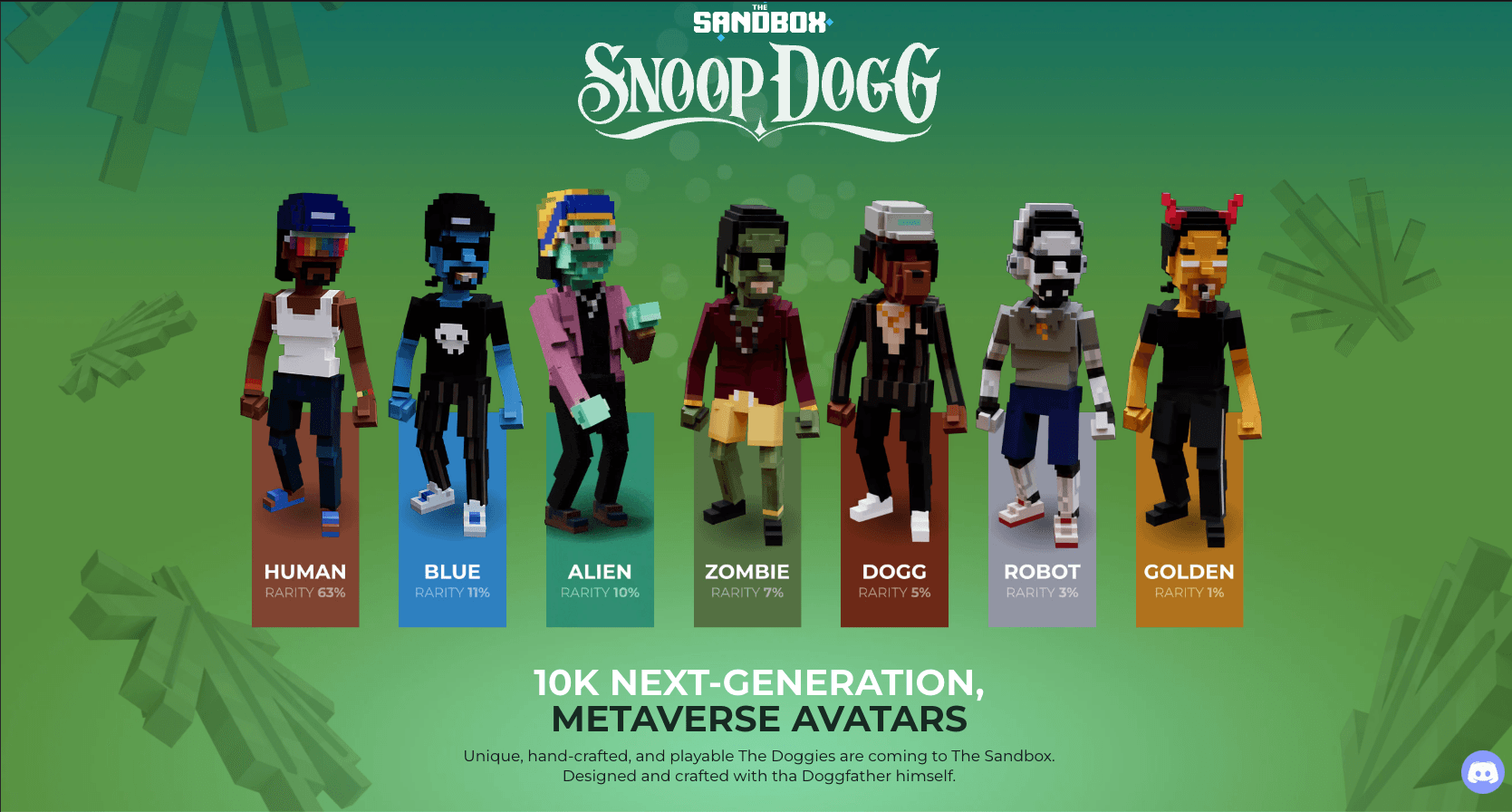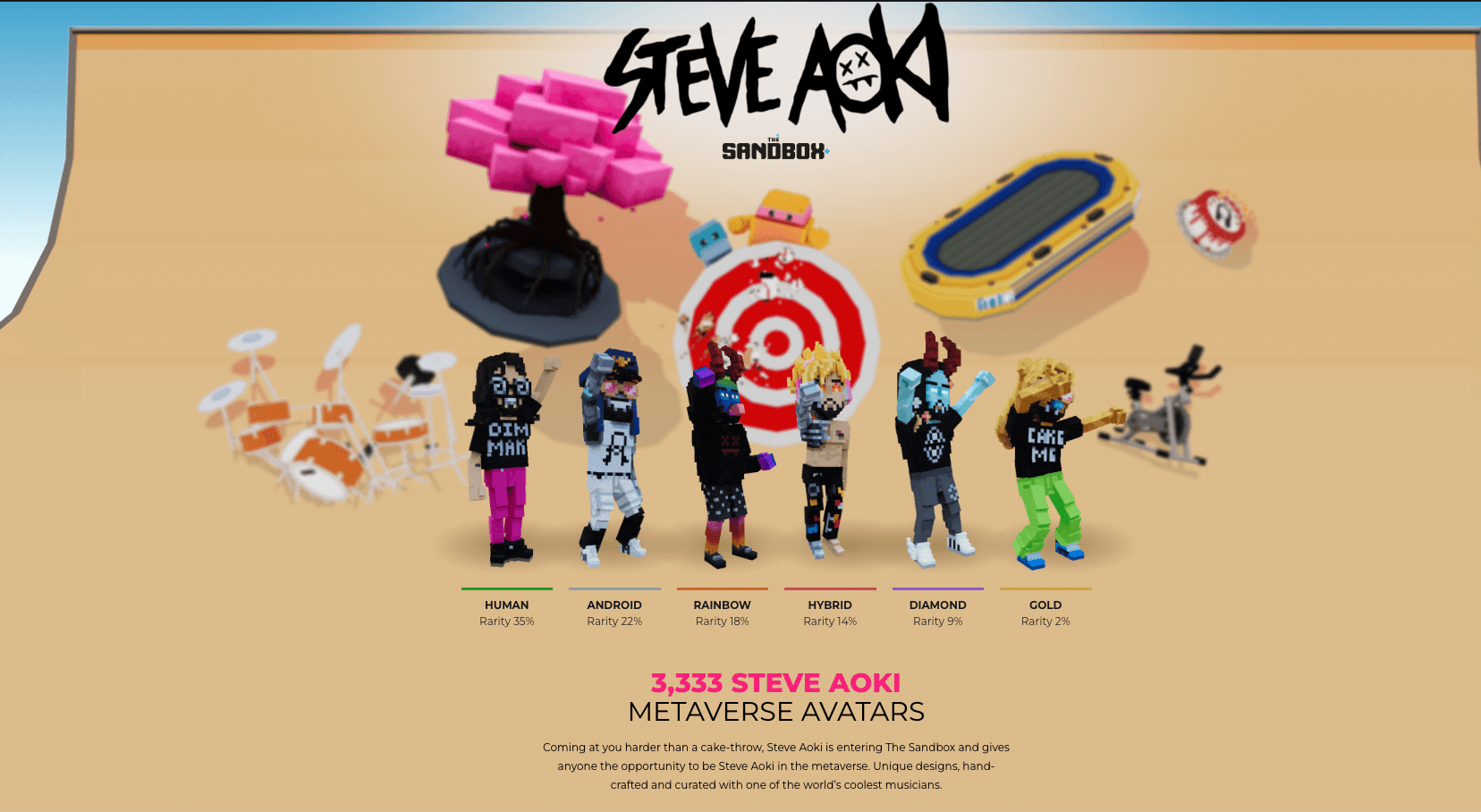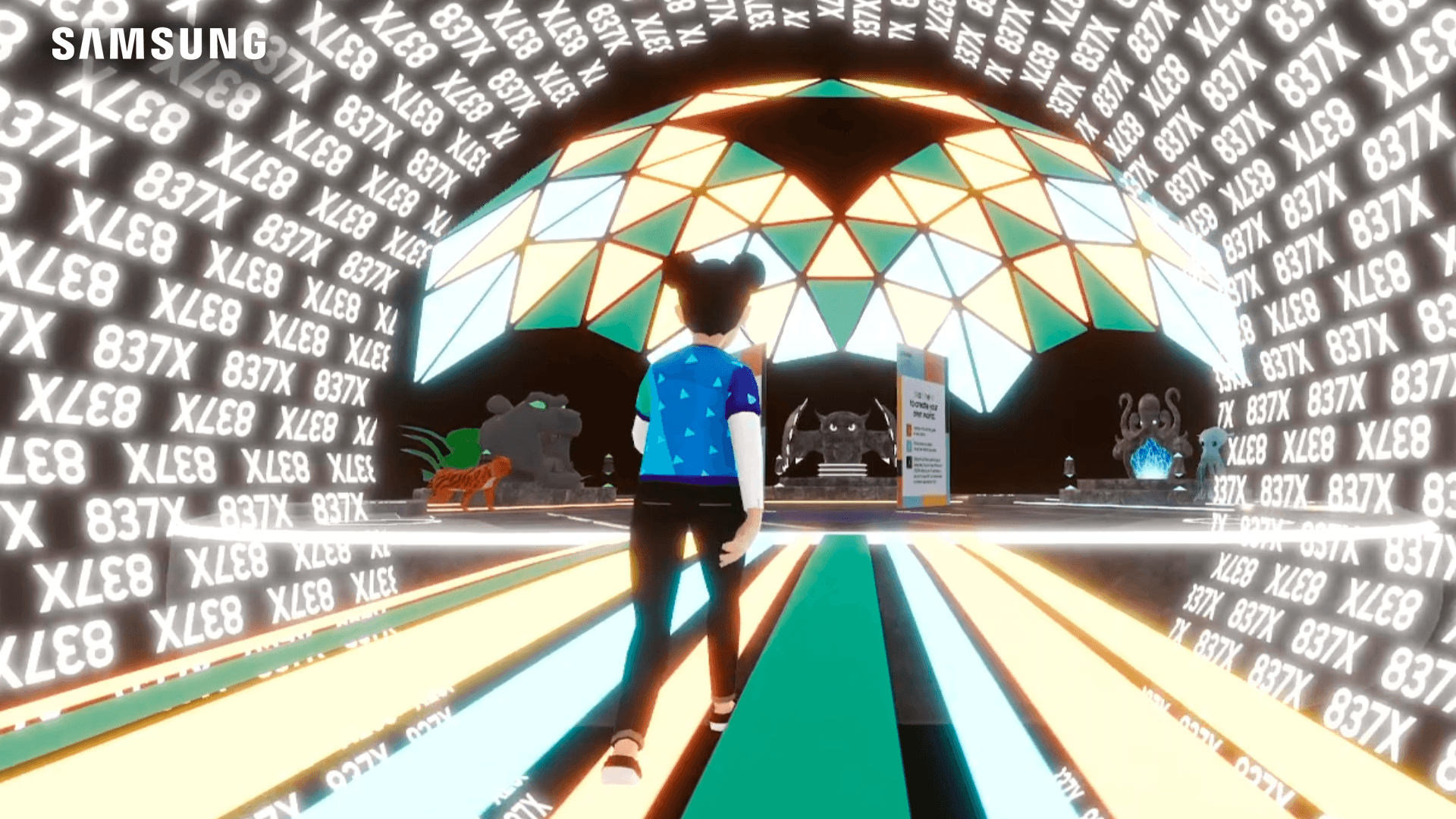There are different types of Metaverses. While they all serve the primary function of connecting people, there are slight variations and differences between them.
And it is important to note: There is no one, “central” metaverse that everyone uses.
There are many companies with their own, like The Sandbox, Otherside, Crypto Voxels, Meta Horizon Worlds, and more.
Within each of these, there are four common use cases for the metaverse. They are:
- Recreational/Entertainment
- Social
- Commercial
- Professional/Educational
One Metaverse can cover one or more of these purposes, as they are not mutually exclusive.
In fact, some of the more popular Metaverses are a combination of the types mentioned above.
The Sandbox is a great example of this.
Not only can you have fun and create your own games and worlds, but you can also learn about NFTs and web3 gaming at the same time.
One way is by playing with your voxelized NFT (like this gorgeous WoW near portraits of her sisters in The Sandbox Alpha lobby).

Alternatively, you might choose to take part in its Metaverse NFT drops that feature partnerships with notable figures like Snoop Dogg or Steve Aoki.


You can also create voxel-based NFTs using VoxEdit and sell them on its marketplace.

The Sandbox serves many purposes; for example, it can be seen as an educational Metaverse, since it encourages players to develop skills in web3, entrepreneurship, and digital asset management. And if that weren’t enough, you also have the ability to design your own world through the Game Maker, a software tool that enables everyone to be a creator.
Finally, you can see how the Sandbox uses its land for commercial use as well; with exclusive partnerships with brands like Gucci, HSBC, or Time; all who are future-proofing their businesses by experimenting with new technologies for their communities and consumers.
Let’s dive into each category in a bit more detail.
Social Metaverses
Metaverse technologies and platforms offer an innovative extension beyond our current modes of communication for people to interact with each other.
These platforms aren’t necessarily replacements for in-person interactions, but they can elevate the quality of our social connections and experiences with others.
You’re no longer limited to static screens or phone calls when calling friends and family. Now, you have the ability to:
- Do a virtual hike with your friend who lives on the other side of the country.
- Go on a date with your partner who’s on a business trip.
- Play a game with your children who are at school overseas.
Nothing replaces offline communication, but social Metaverses set out to provide a worthy alternative.
Commercial Metaverses
As metaverses are used for social purposes, there are several avenues to explore ways of monetizing the digital spaces where communities come together.
While monetization isn’t the sole focus, online universes present opportunities for organizations, both small and large, to connect to audiences and communities. As we mentioned earlier, many brands are entering the space to better understand how these new technologies can elevate experiences and interactions.
Some of these brands include:
- Disney
- Gucci
- Tiffany & Co
- Adidas
And many more!
An Example
Decentraland is another Metaverse that has caught the attention of businesses looking to set up virtual showrooms or stores. For example, Samsung created an immersive space in Decentraland called 837X for its global community.

Samsung has also hosted events in Decentraland, like the 2022 Discover Samsung Winter Sale. During this time, community members were invited to join in a digital scavenger hunt for goodies worth up to $10,000.
Professional/Educational Metaverses
Last but not least are the Metaverses geared towards more professional or educational settings.
This is a growing space for workplaces and educational institutions to provide a landscape in which people can work or study in environments that support all their students’ needs.
Imagine taking a science class and the teacher invites you into the school’s metaverse for a lesson. The classroom transforms into the solar system, and you can fly around it.
Or if you’re a salesperson looking to find a client overseas, you can now host digital conferences online without having to fly thousands of miles to make a single sale or connection.
An article by ViewSonic explores the various opportunities and challenges of using metaverse technology for educational purposes. The advantages of an immersive online study space have parallels to how workplaces could evolve.
A Reminder: As this space continues to grow and evolve, it’s important to be mindful that what we have now may look very different in 1, 5, or 10 years. We want to bring this up because change can feel scary or unsettling sometimes, especially when the Metaverse is compared to the Matrix or other dystopian fantasies. But the Metaverse is ultimately a tool that we can use to facilitate meaningful connections with each other.
